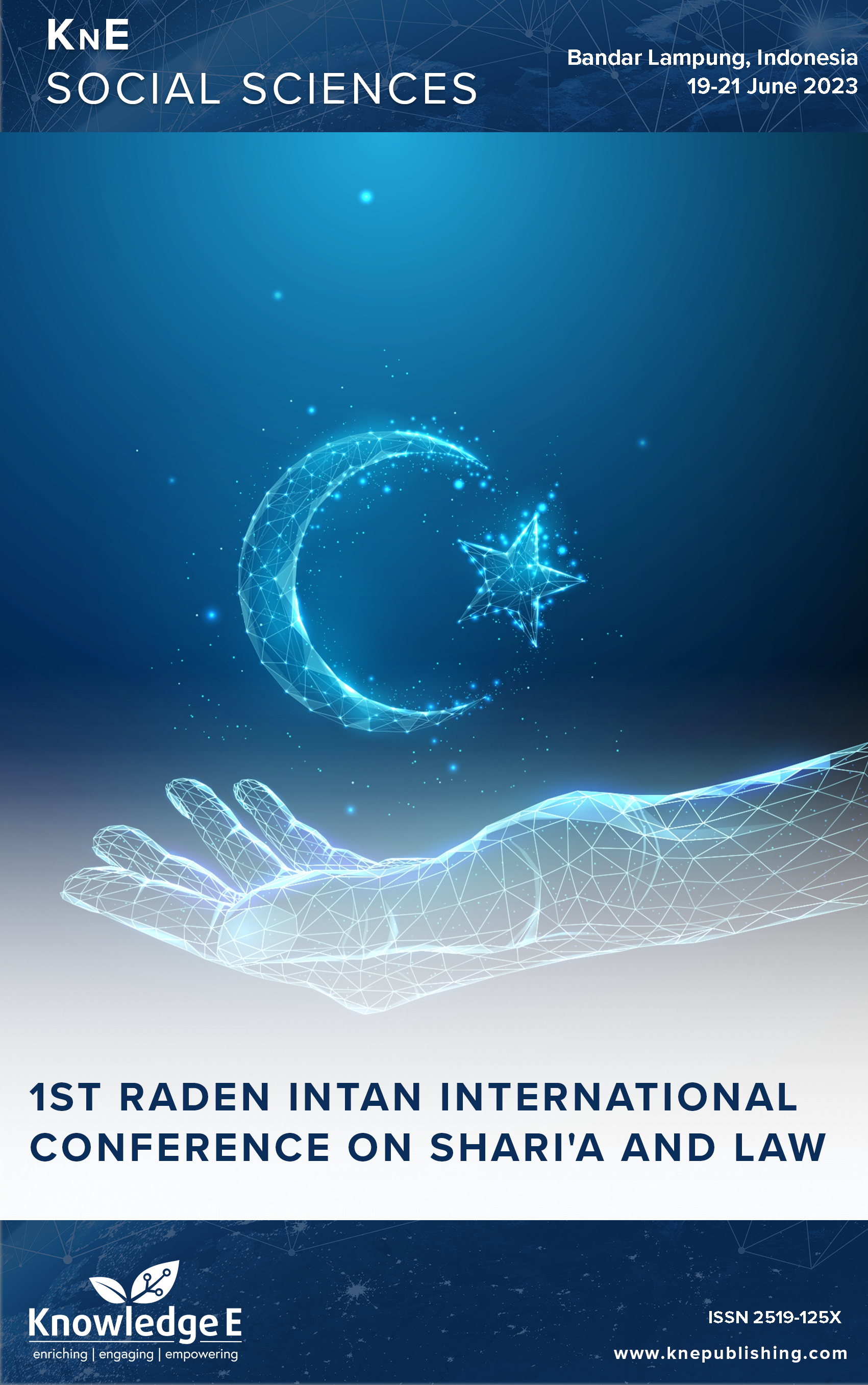The Convergence of Islamic Law and Technology in The Enforcement of Citizen's Constitutional Rights in The Era Society 5.0
DOI:
https://doi.org/10.18502/kss.v9i2.14977Abstract
Globalization spreading across life spheres, especially in the fields of science and technology, also affects the digitalization of law through media convergence. This digitalization of the law is not exempt from the interference of Internet users in the form of criticism, dissemination of cases or social and legal issues, as well as advice to governments or the legal system through social media platforms used by the public, either in a national or international scope. The influence of people’s opinions on the Internet through social media has been remarkable in recent times on the law enforcement ruling of a case. In few cases, the decision was made due to the pressure of internet citizens on social media. The purpose of this study is to describe the convergence of Islamic law and technology in enforcing the constitutional rights of citizens in the era of Society 5.0 as an effort to create democracy and enforcement of the law that is fair and transparent through independence and freedom to express opinions, as well as the right to share and receive information by citizens of the Internet in electronic media, social media, in particular. This research is qualitative with methods of Law approach, conceptual approach, and case approach. The source of legal material used is secondary legal material, which is subsequently analyzed by deductive methods. The result of this study is that when society cannot be regulated primarily related to the use of social media, then the law can act as a law as a tool of social engineering.
Keywords: convergence, Islamic law, constitutional rights, era Society 5.0
References
Sulistiyono A. Hukum Ekonomi Sebagai Panglima. Sidoarjo: Masmedia Buana Pustaka, 2009.
Sulistyawan AY. Urgensi Harmonisasi Hukum Nasional Terhadap Perkembangan Hukum Global Akibat Globalisasi. J. Huk. Progresif. 2019;7(2):171. DOI: https://doi.org/10.14710/hp.7.2.171-181
Bolo AD. Demokrasi di Indonesia: Pancasila sebagai Kontekstualisasi Demokrasi. Melintas. 2019;34(2):145–67. DOI: https://doi.org/10.26593/mel.v34i2.3389.145-167
Watie ED. Media Sosial yang Dibenci yang Ditakuti. J. Messenger. 2012;4(2):14. DOI: https://doi.org/10.26623/themessenger.v4i2.155
Sudibyo A. Jagat Digital: Pembebasan Dan Penguasaan, Kedua. Jakarta: Kepustakaan Populer Gramedia, 2021.
Pusat KP. Kedaulatan Frekuensi Regulasi Penyiaran, Peran KPI, dan Konvergensi Media, Pertama. Jakarta: PT Kompas Media Nusantara, 2013.
Mario V. “Istri Ungkap Dugaan Perselingkuhan Virgoun, Pajang Surat Pengakuan,” Kompas.com, 2023. https://www.kompas.com/hype/read/2023/04/24/214320066/istri-ungkap-dugaanperselingkuhan- virgoun-pajang-surat-pengakuan (accessed May 30, 2023).
Soekanto S, Mamudji S. Penelitian hukum normatif : suatu tinjauan singkat / Prof. Dr. Soerjono Soekanto, S.H., M.A., Sri Mamudji, S.H., M.L.L. | OPAC Perpustakaan Nasional RI., Cetakan ke. Jakarta: Rajawali Press, 2015. Accessed: May 29, 2023. [Online]. Available: https://opac.perpusnas.go.id/DetailOpac.aspx?id=1174906
Huda N. Konstruksi Hukum Dalam Perspektif Spiritual Pluralistik, Pertama. Yogyakarta: Thafa Media, 2021.
“Hasil Pencarian - KBBI Daring.” https://kbbi.kemdikbud.go.id/entri/konvergensi (accessed May 15, 2022).
Budhijanto D. “Peran Hukum Telekomunikasi Terhadap Implikasi Konvergensi Teknologi Informasi Dan Komunikasi,” J. Din. Huk., vol. 14, no. 1, pp. 134– 150, 2014, [Online]. Available: http://dinamikahukum.fh.unsoed.ac.id/index.php/JDH/ article/view/283
Sulvinajayanti, Manajemen dan Konvergensi Media Penyiaran, Cetakan Pe. Parepare: Aksara Timur, 2018.
Sihabudin A. Teknologi Informasi Komunikasi dan Gaya Hidup Mahasiswa. J. Teknodik. 2013;17(2):177–83. DOI: https://doi.org/10.32550/teknodik.v0i0.77
Watie ED. Komunikasi dan Media Sosial (Communications and Social Media). J. Messenger. 2016;3(2):69. DOI: https://doi.org/10.26623/themessenger.v3i2.270
Kementerian Pendayagunaan Aparatur Negara dan Reformasi Birokrasi Republik Indonesia, “Peraturan Menteri Pendayagunaan Aparatur Negara Dan Reformasi Birokrasi Republik Indonesia Nomor 83 Tahun 2012 Tentang Pedoman Pemanfaatan Media Sosial Instansi Pemerintah,” Peratur. Menteri Pendayagunaan Apar. Negara dan Reformasi Birokrasi Republik Indones. Nomor 83 Tahun 2012 Tentang Pedoman Pemanfaat. Media Sos. Instansi Pemerintah; 2012. pp. 1–23.
“Undang-Undang Dasar Negara Republik Indonesia Tahun 1945 - Wikisource bahasa Indonesia.” https://id.wikisource.org/wiki/Undang- Undang_Dasar_Negara_Republik_Indonesia_Tahun_1945 (accessed May 30, 2023).
“UU No. 19 Tahun 2016 tentang Perubahan Atas Undang-Undang Nomor 11 Tahun 2008 Tentang Informasi Dan Transaksi Elektronik [ JDIH BPK RI].” https://peraturan.bpk.go.id/Home/Details/37582/uu-no-19-tahun-2016 (accessed May 30, 2023).
Turow J. “Media today: Mass communication in a converging world,” Media Today: Mass Communication in a Converging World. pp. 1–445, 2016. https://doi.org/10.4324/9781315681726. DOI: https://doi.org/10.4324/9781315681726

